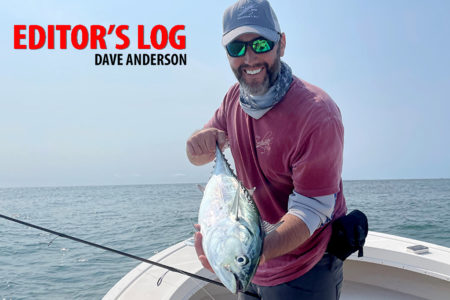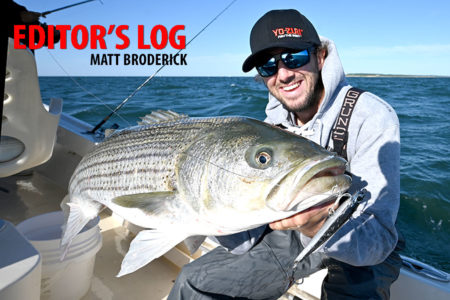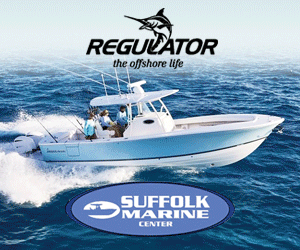The Atlantic States Marine Fisheries Commission (ASMFC) will meet from February 4-6 in Arlington, VA where 2020 striped bass measures should finally get hammered out. As the management body responsible for fisheries inside 3 miles, ASMFC has provided New Jersey with response to their submitted proposals aimed at meeting an 18% reduction in harvest in January. Remember that while the commission approved a coastwide slot limit of one striper at 28 to 35 inches for the recreational sector last fall, states may use “conservation equivalency” to set regulations, so long as proposals meet technical standards for an 18% reduction. New Jersey’s back bay striper season officially opens March 1; with new regulations required as of April 1, expect to hear more this month at TheFisherman.com.
The Mid-Atlantic Fishery Management Council (MAFMC) who’s responsible for federal waters beyond 3 miles will meet from February 11-13 in Duck, NC. At their December meeting, the MAFMC approved use of regional conservation equivalency for the recreational fluke fishery again in 2020; for New Jersey this means devising its own season, size and bag to keep within the annual harvest allotment rather than being crammed in with Connecticut and New York. Due to missing appointees, there was no quorum at the January meeting of the New Jersey Marine Fisheries Council so no official action could be taken. Again, expect an emergency meeting sometime this month to address start/end of summer flounder and/or striped bass.
MAFMC also previously approved status quo recreational porgy and sea bass management measures for both state and federal waters in 2020. There had been proposals floating around to knock porgy limits back to something ridiculously absurd, along the lines of a three to five fish bag limit; but give credit where credit is due as the folks at NOAA Fisheries felt that was a bit of an overreach, even by bureaucracy standards. While it certainly would be nice to see more days of sea bass fishing, at least we’re going into 2020 without offering more recreational sacrifices on the big three bottomfish species. Regrettably, the same can’t be said of bluefish this year given the new three-fish bag limit as private anglers, five fish for those on for-hire boats proposed by ASMFC/MAFMC. Personally I find cutting recreational bag limits by 75-80% to meet an 18% reduction completely ludicrous! As for the variance between private and for-hire anglers, it’s based on statistical data showing just 3.6% of coastwide landings taken by anglers onboard charter and party boats. The majority of harvest (which also includes catch & release mortality) comes out of the new Marine Recreational Information Program estimates, or MRIP.
While MRIP is truly a bitter pill, it could provide a unique opportunity ahead. MAFMC and ASMFC have scheduled a series of public hearings to gather input towards a new Summer Flounder, Scup, and Black Sea Bass Commercial/Recreational Allocation Amendment which ultimately could modify the quota allocation percentage between commercial and recreational fishermen for fluke, sea bass and porgies. Because MRIP data shows much higher recreational catch estimates than previously thought, managers are recognizing “the current commercial and recreational allocation percentages for all three species do not reflect the current understanding of the recent and historic proportions of catch and landings from the two sectors.” There are two scoping meetings planned in New Jersey this month, one on February 24 from 6-8 p.m. at the Belmar Municipal Court Room at 601 Main Street in Belmar, the second on February 25 from 6-8 p.m. at the Galloway Township Branch Library on 306 East Jimmie Leeds Road in Galloway. Delaware’s meeting will be held on February 19 from 6-7 p.m. at the Delaware Dept. of Natural Resources & Environmental Control at the Richards & Robbins Building, 89 Kings Highway in Dover.
Let’s be honest, MRIP bites! But if it leads to a larger chunk of quota, that wouldn’t be too hard to swallow.



